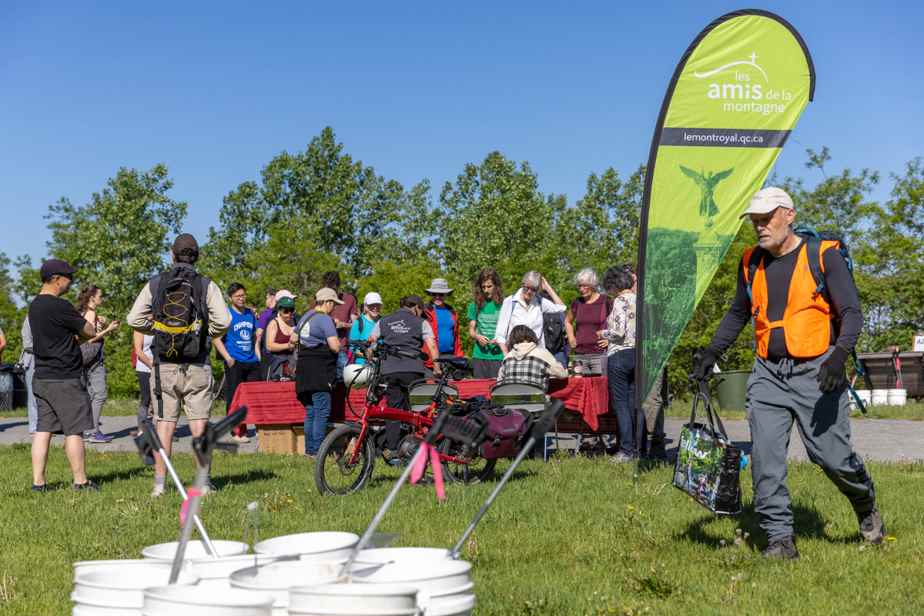After a two-year forced break, Les amis de la montagne have resumed their traditional cleaning chores, an opportunity for them to take the pulse of Mount Royal affected by heavy pandemic traffic.
Posted at 10:51 p.m.
Sunday, 9 a.m., the clearing of Tiohtià:ke Otsira’kéhne Park, also known as Outremont Summit, is teeming with people. About a hundred volunteers who came to lend a hand to the Friends of the Mountain were given gloves, grippers and buckets.
This year, in addition of course to picking up the ubiquitous waste in the park like every spring, we want to study certain phenomena that affect the mountain, some natural, others a little less.
“We observe: are there elements of vandalism, damaged trees, the presence of the gypsy moth [insecte ravageur qui dévore le feuillage des arbres] “, enumerates the director general of the Friends of the mountain, Hélène Panaïoti.
The organization is also trying to study another disturbing phenomenon, the state of the undergrowth of Mount Royal.
If you walk in the park, you will see that there is nothing under the trees, no relief. The trees are beautiful, the forest looks healthy, but a biologist will tell you, “There’s nothing going on.”
Hélène Panaïoti, General Manager of Friends of the Mountain
Once all this data has been collected, it will be submitted to the City of Montreal in the form of a report and recommendations in the hope that it will act to prevent the degradation of the park.
In question, “the balance between the human presence and the needs of nature”, says Hélène Panaïoti. During the pandemic, “everyone came to the park, and all kinds of new wild trails were created, the entry points into the park multiplied, and there, we really want to document it,” he adds. -she.
Epidemic of “wild paths”
Far from being trivial, the multiplication of these “wild paths” can lead to early degradation of the mountain, underlines the scientific advisor for Les amis de la montagne for more than 30 years, Éric Richard.
“It’s especially in the steep sections, in the areas where the slope is a little bit bigger. Every time someone takes a shortcut, it easily creates erosion, new paths,” he explains.
Long-term consequences are to be feared, adds the adviser, especially in an environment like Mount Royal, where the forest cover is sometimes thin and the rocky ground is outcropping.
We can help the vegetation to grow back, but the more the soil is trampled, compacted, the less favorable it is to the regeneration of the forest. It will require that we put more effort into decompacting, planting, whereas if the environment were in good health, it would regenerate on its own.
Éric Richard, Scientific Advisor to Friends of the Mountain
Obviously, not all areas of the mountain are affected as much. Less frequented, Tiohtià:ke Otsira’kéhne Park would do rather well, while Mount Royal Park and more specifically the surroundings of the Camillien-Houde lookout are rather badly damaged.
Learn more
-
- 23%
- Increase in the number of kilometers of informal trails in Mount Royal Park from 2019 to 2020. Of the 65 km of trails in the park, 64% would be informal.
Source: Friends of the Mountain
- 750 hectares
- Area of the Mount Royal heritage site, of which 423 hectares (ha) are made up of green spaces and natural environments. This number includes some fifteen parks, including three at the top of the mountain: Mount Royal Park (200 ha), Tiohtià:ke Otsira’kéhne Park (23 ha) and Summit Woods (23 ha).
Source: Friends of the Mountain

